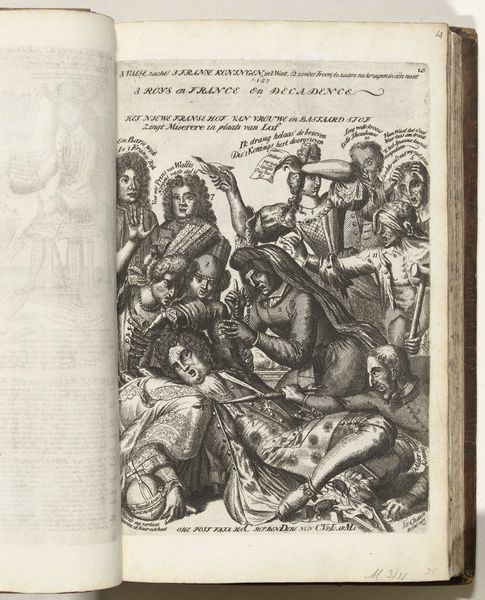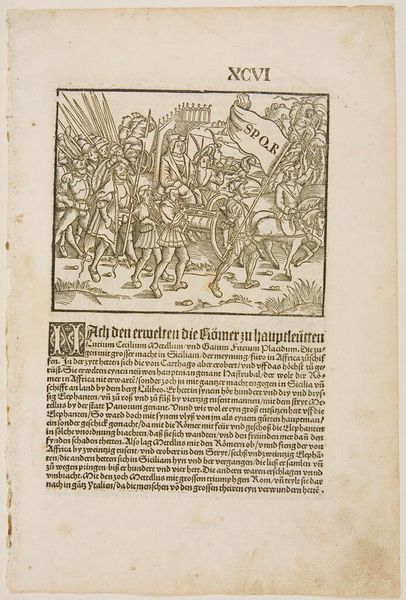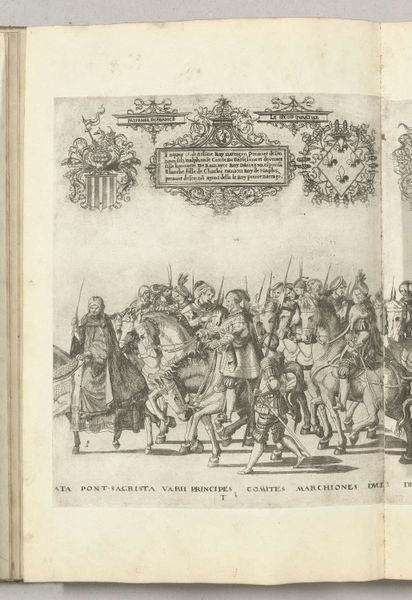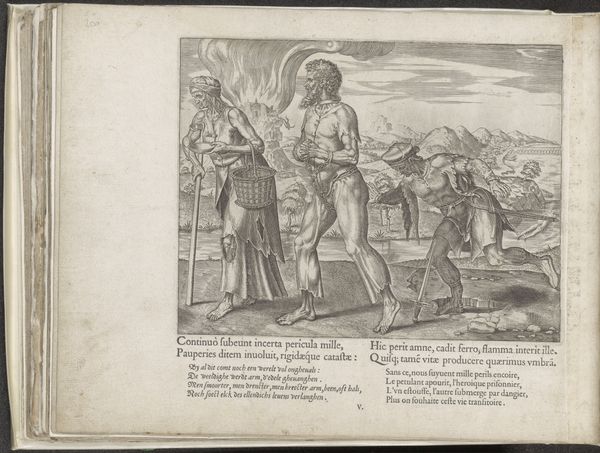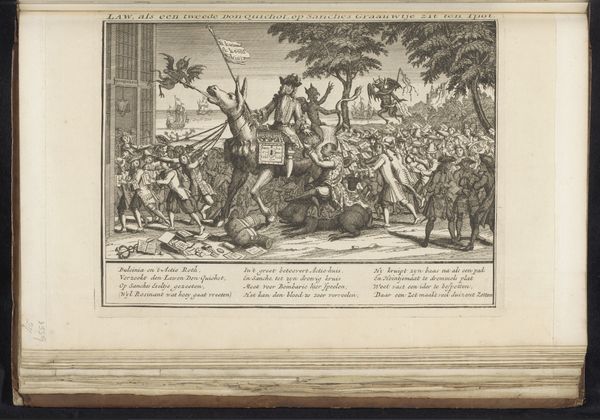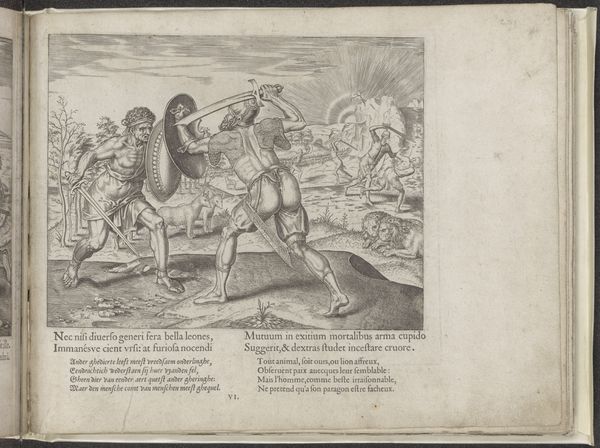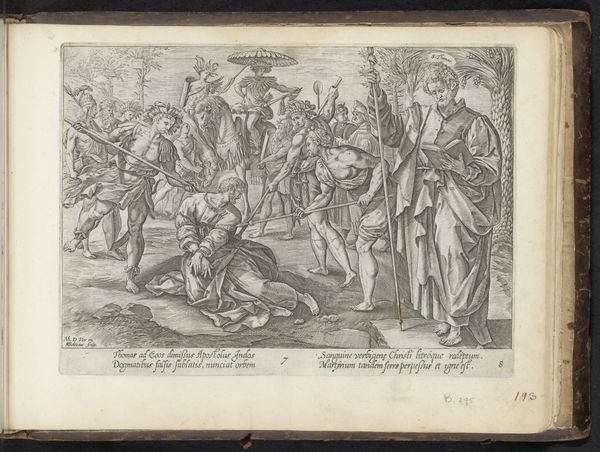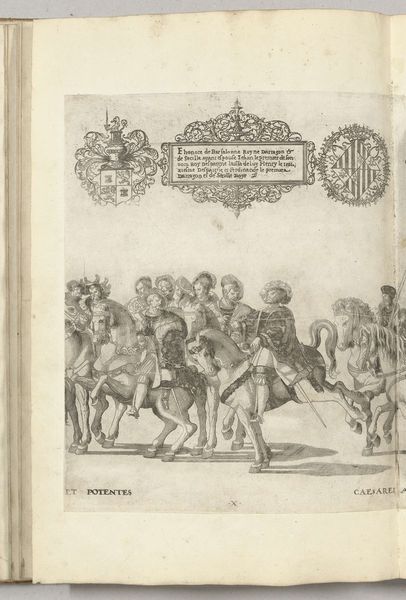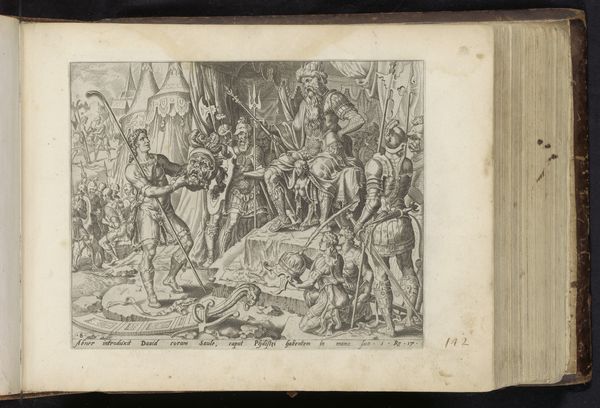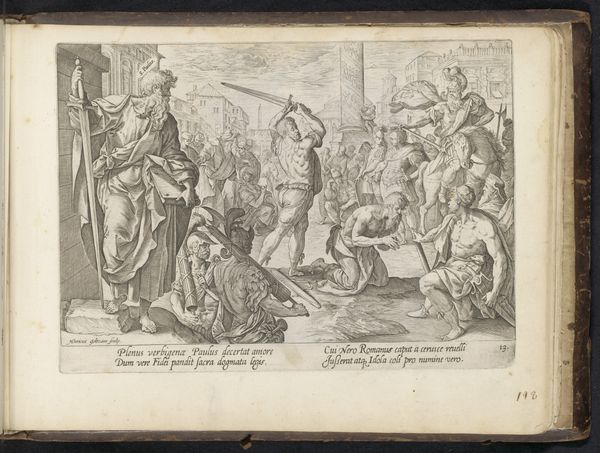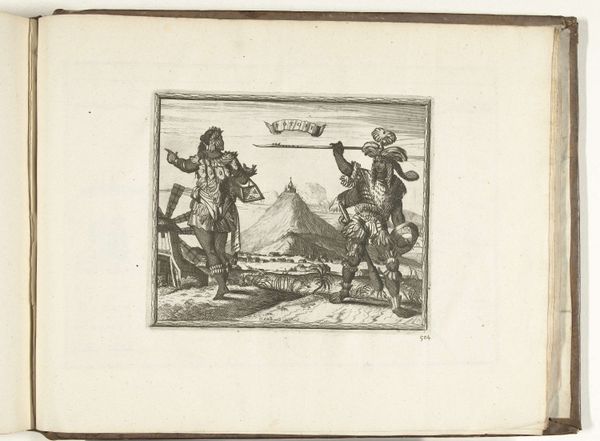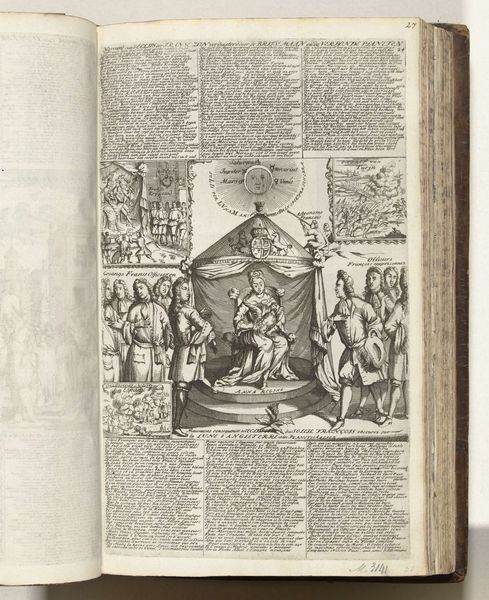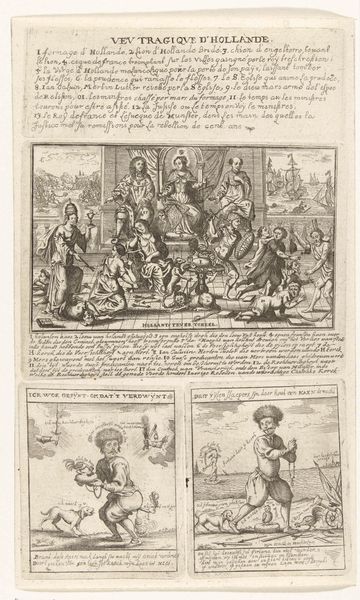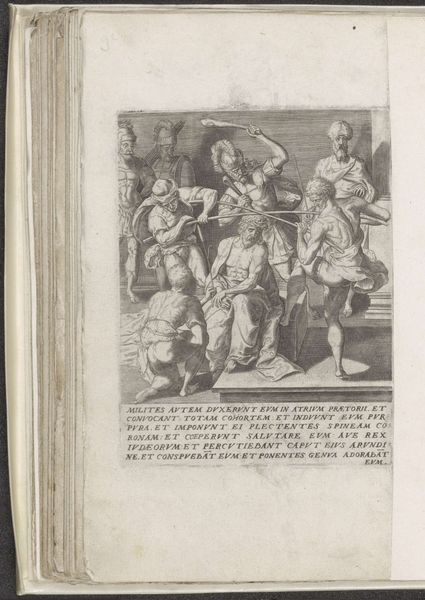
print, engraving
#
allegory
#
baroque
# print
#
caricature
#
history-painting
#
engraving
Dimensions: height 161 mm, width 203 mm
Copyright: Rijks Museum: Open Domain
Curator: Oh, my… there's just so much happening here. I feel a little overwhelmed, but strangely drawn in! Editor: Precisely. This print, likely an engraving, titled "Spotprent op Cromwell, 1656," or "Satirical Print on Cromwell," made in 1656 by an anonymous artist, is absolutely overflowing with political commentary. The Baroque style, while typical for the time, almost exacerbates the chaotic scene. What exactly catches your eye first? Curator: That multi-headed beast! Cromwell himself seems to be riding this bizarre monster, a creature of pure "Grouwels," horrors it seems, based on the inscriptions above. He is the central, most prominent, most disturbing figure in the composition. It seems meant to represent the multifaceted nature of his tyrannical rule? Editor: It is. Note the careful allegorical construction. The figures of Ferdinand III and Phillip IV stand to the left, representing Catholic powers wary of Cromwell's growing influence. To the right, Mazarin appears, tethered and submissive. The piece is a visual denunciation of Cromwell’s protectorate, particularly targeting his relationship with France and his perceived religious deviations. It critiques the very structure of power he’d built. The tumbling objects at the bottom symbolize the collapse of traditional order. Curator: Right. I see now that Cromwell's holding a cup. And his stance, triumphant yet also slightly unhinged... He looks positively giddy with power. Do you think the artist felt a moral obligation to expose what they saw as corruption? Editor: Unquestionably. This print functions as propaganda. Look at the reactions of the people surrounding Cromwell—some are pleading, others seem resigned. It's crafted to evoke a very specific emotional response: fear, resentment, and a call to resistance against Cromwell's "tyranny." The linear quality is common to engraving as it attempts to convey clarity amidst complexity. Curator: It definitely has that effect! Thinking about today’s political cartoons, they share a lot of that same in-your-face energy. Though here, the layering of detail feels much denser. What a way to capture a historical moment, a boiling point in history. It seems a reflection on a time of intense upheaval. Editor: Indeed. A concentrated distillation of anxieties about power, religion, and international relations viewed through the critical, biased lens of the artwork, reflecting how deeply intertwined these spheres of influence were.
Comments
No comments
Be the first to comment and join the conversation on the ultimate creative platform.
